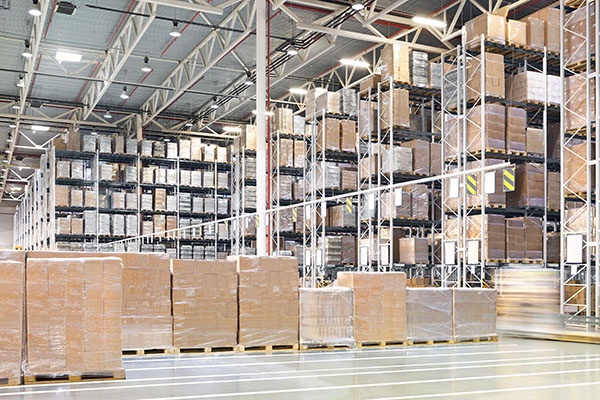
There's a lot more to commercial warehouse leasing than just getting the right square footage at the right price. Furthermore, the technical details are more complicated than they might seem at first. While working with an expert can help increase the chances that you make the right choice, having some baseline knowledge about warehouse leasing also helps. Here are some times to keep in mind:
1. Squares and Cubes
When you rent office space, you usually look at the square footage. If you pay any attention to the ceiling height, it's just from an esthetic perspective, since higher ceilings can make a space more pleasant. In commercial warehouse leading, clear height is crucial since a higher ceiling means that you can use a taller rack to store more items. In fact, warehouse utilization experts frequently do their calculations on a per-cubic foot basis instead of a per-square foot basis. It's relatively straightforward math to figure out that a $5 per square foot warehouse with a 24 foot ceiling isn't as good a deal as a $6 warehouse with a 36-foot height, since the latter is 17 cents per cubic foot while the former is 21 cents per cube.
The commercial warehouse leasing calculus isn't always as simple as just calculating cost-per-cube, though. High-up space is only valuable if you can use it. A picking and pulling area might be limited to the height of its workers and, while you might be able to pull a pallet or large item down from a slot 36 feet in the air, pulling a smaller item might be impractical. As such, you will want to look at your cost per cubic foot that you can actually use.
2. Sweat the Small Stuff
What's the floor loading of the office space you're sitting in right now? Most of our clients have no idea. In commercial warehouse leasing, small (and large) technical details can be very important. If you plan to use tall racks to store heavy items, you might need special, reinforced floors. Heating and air conditioning also isn't something to take for granted. Some warehouses have it, some don't. All of these technical details matter.
3. Check the Configuration
Warehouses aren't all created equal. The location of doors and of columns can greatly impact the efficiency of your space. For instance, if you have standard 96 inch pallet racks, and your warehouse has 45 foot column spacing, you're going to end up with wasted space around every column, since your racks can be lined up at either 40 or 48 feet of width.
Door configurations are also important. If the warehouse doesn't have the doors where you need them to get your goods from the racks to the trucks and back, you'll end up wasting money on additional labor to move items around. Columns in the middle of your path can also decrease the efficiency of your labor force, making the space more expensive to operate even if it is inexpensive to occupy.
4. Be a Truck (or Train) Driver
One of the keys to successful commercial warehouse leasing is to think like a truck driver or train captain. If you can't get your needed form of transportation to the building, it probably won't work for you. Without a rail spur, the building isn't going to be convenient for rail. Truck transportation requires not just good connections to roads, but also ample space in the warehouse's lot to move around, back in and out and otherwise maneuver.
Here are a few more warehouse articles to check out:
Warehouse Leasing Tips
Tips When Touring Warehouse Space
Four Ways to Manage Your Warehouse Occupancy Cost
Subscribe to our blog for more great CRE tips!!








